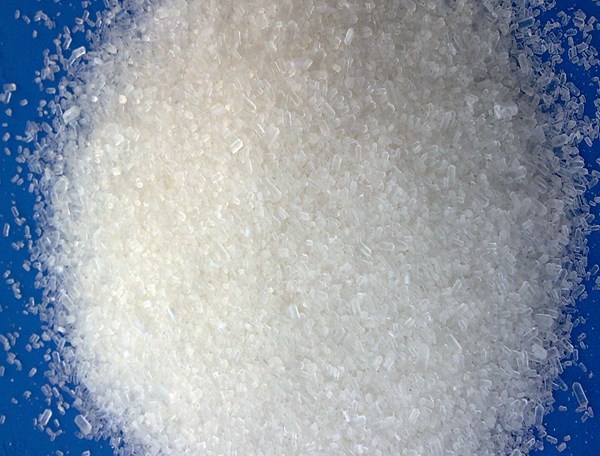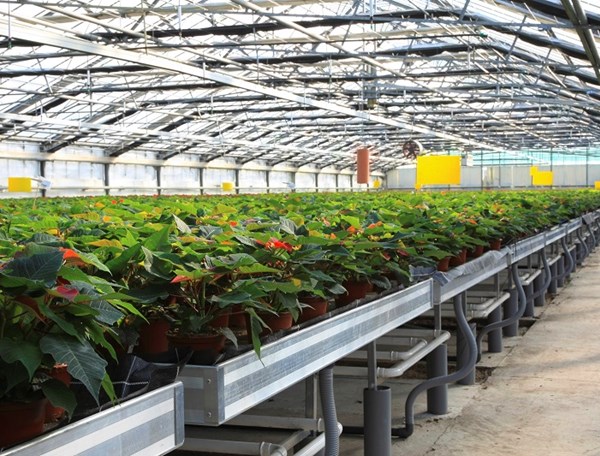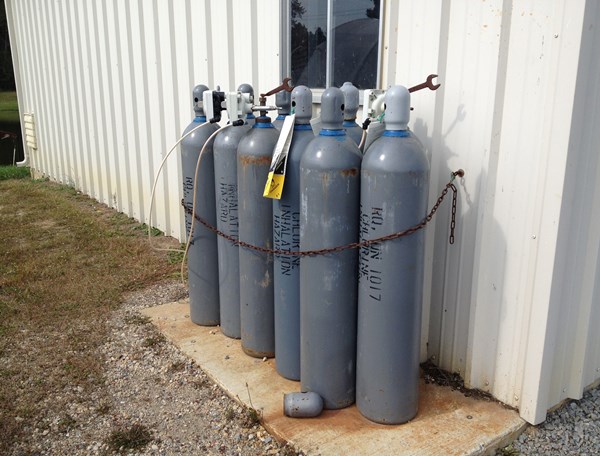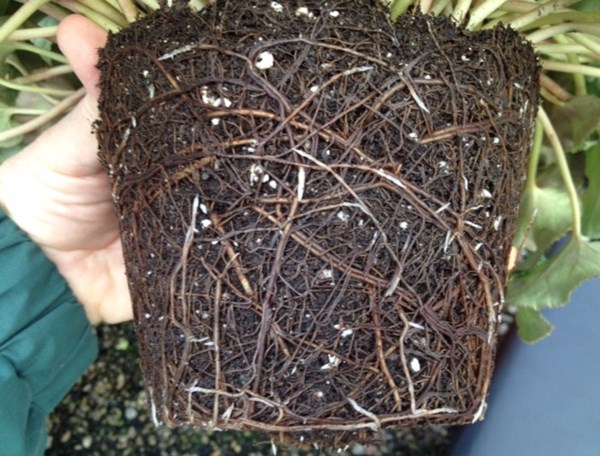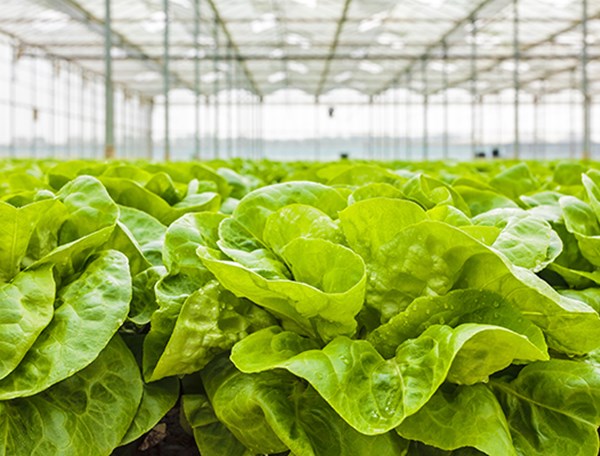Training Center
Relationship Between Fertility Extremes and Growing Medium pH
Thursday, September 7, 2023 | Troy Buechel
The pH of a growing medium increases or decreases depending on the fertilizer used, the crop grown, and the water alkalinity. However, pH change is usually gradual. When fertility levels in the growing medium are either very low or excessive, the pH of the growing medium can change rapidly. When the fertilizer level is very low in the growing medium (measured as electrical conductivity (E.C.)), there is a rapid increase in the growing medium's pH. Likewise, when the E.C. of a growing medium becomes excessive because of a potentially acidic fertilizer, the pH drops. So why does this happen and is it a concern for the crop grown?
Low Fertility = Higher pH?
Typically, when a crop is grown in a growing medium where the overall fertility level is very low (E.C. is below 0.3 mmhos/cm), the pH tends to increase rapidly by approximately 0.5 pH unit. This can be seen in Figure 1 on days 8-10, when the pH rose from 5.8 to 6.5 as the E.C. dropped below 0.3 mmhos/cm. However, if the same growing medium with the same crop is fertilized more frequently so the E.C. does not drop below 0.5 mmhos/cm, the pH changes very little. The phenomenon of sudden pH climb due to low E.C. often occurs when growers feed at very low rates, withhold fertilizer to minimize plant growth or simply do not feed at all. It is believed that this occurs because the plant has few fertilizer elements to take up from the growing medium that can generate acid through the roots. In addition, the water alkalinity and limestone in the growing medium work together to also increase the pH of the growing medium.
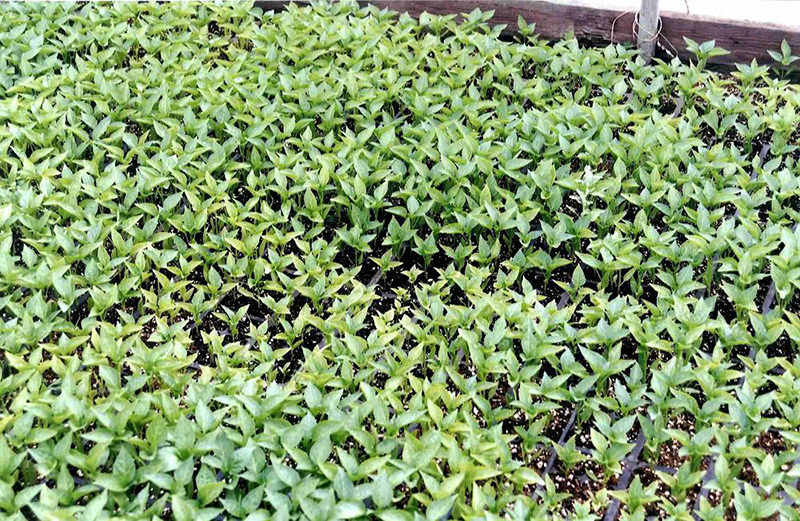
Pepper growth is uneven and some chlorosis is appearing because these plants are not being fertilized and pH is above 7.0. Applying fertilizer once would drop the growing medium's pH and correct nutrient deficiencies. Source: Premier Tech
The good news is that this 0.5 pH unit increase is “artificial” and as seen in Figure 1, the pH quickly dropped back down to 5.8 by simply applying the recommended rate of a potentially acidic fertilizer, such as 20-10-20. Because the pH of the growing medium responded so rapidly when fertility levels were brought back up to normal, the “real pH” of the growing medium was not 6.5 or 6.3, but about 5.8. Although the pH was high, it is not a concern if fertilizer is applied at normal rates. However, if fertilizer is not applied for more than a week, then the high pH and very low fertilizer levels will cause nutrient deficiencies.
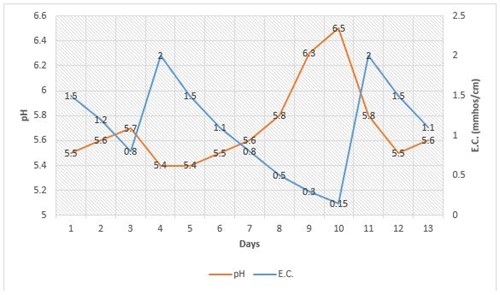
Figure 1. This graph represents a typical pH and very low E.C. relationship. As E.C. becomes very low, the pH increases, as seen on days 8-10, regardless of the type of fertilizer used. If an acidic fertilizer such as 20-10-20 is applied when the E.C. is very low, there is often a quick pH drop as seen on days 11-12. Source: Premier Tech
Excess Fertility = Lower pH?
Just as very low E.C. leads to a rapid pH increase in a crop, excessive fertility levels from a potentially acidic fertilizer or even a potentially basic fertilizer can “artificially” cause a rapid pH drop of about 0.5 mmhos/cm. This can be seen in Figure 2 on days 4 and 9. This pH drop can quickly be corrected simply by allowing the plant to take up the excess fertilizer, thereby bringing the E.C. down to a normal level of less than 2.5 mmhos/cm (as seen in Figure 2, days 5-8), or by leaching (Figure 2, day 10). It makes sense when applying a potentially acidic fertilizer that the pH may decline depending on the water alkalinity. However, when E.C. exceeds 3.5 mmhos/cm, there seems to be a rapid drop in pH that can quickly be reversed when the E.C. in the growing medium is brought down to normal levels.
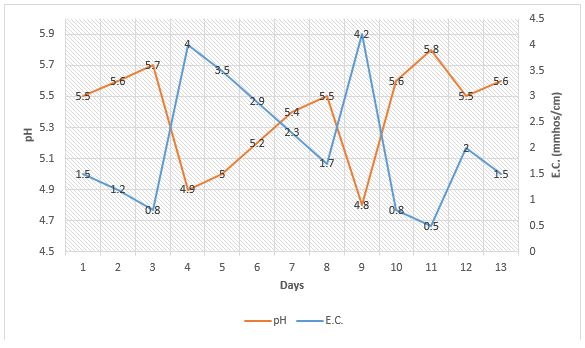
Figure 2. This graph shows a typical pH and E.C. relationship. As E.C. becomes excessive (days 4 and 9), the pH drops from using a potentially acidic fertilizer. If the growing medium is leached, as seen on day 10, E.C. drops and pH rises rapidly.
Source: Premier Tech
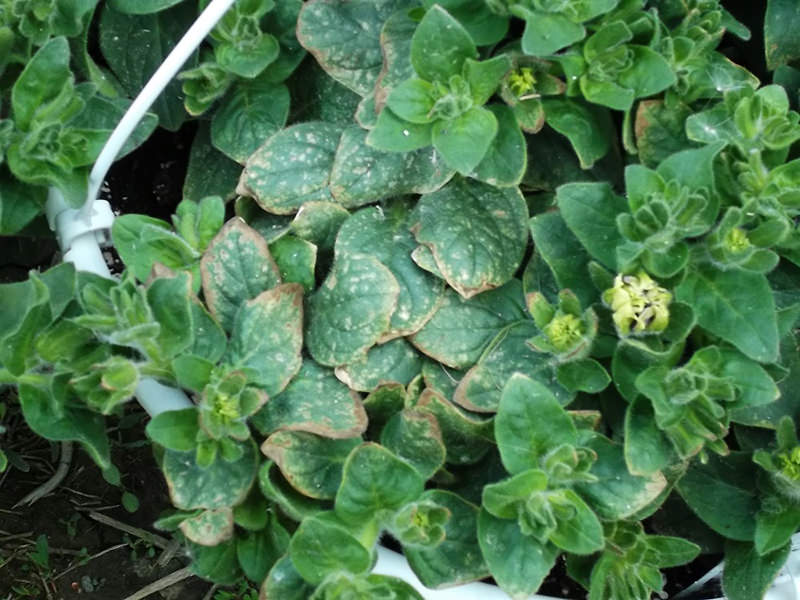
Petunia grown with a high rate of water soluble fertilizer caused E.C. and the pH to drop, which led to a micronutrient toxicity (seen as brown leaf edges and speckling) and stunting. Source: Premier Tech
Fertilizer salts can become excessive in the growing medium from applying excessive levels of water soluble fertilizer at one time, accumulation of fertilizer in the growing medium from overfeeding, or from high application rates of controlled release fertilizer. In the last example, most controlled release fertilizers are acidic. If they are applied at high rates or it becomes hot, it is typical that fertilizer levels become excessive in the growing medium and pH drops.
If you have further questions, please contact your Premier Tech Grower Services Representative or your Regional Sales Representative.
 |
 |
 |
 |
|---|---|---|---|
|
Ed Bloodnick |
Nathan Wallace-Springer |
Lance Lawson |
Victor Brantly |
 |
 |
 |
|
|
Troy Buechel |
Susan Parent |
Jose Chen Lopez |
PRO-MIX® is a registered trademark of PREMIER HORTICULTURE Ltd.
Related Articles
-
MYTH Series: Epsom Salt Decreases the pH of Growing Media
Epsom salt is used by many growers as a fertilizer supplement to provide magnesium and sulfate when they are low in the fertilizer solution.
-
MYTH Series: Sulfur Drops the pH of Growing Media
In the horticultural industry, many myths exist that can greatly affect how containerized crops are grown in the greenhouse environment.
-
Water Sanitation Part 3a: Oxidizers Used for Water Sanitation
This article will focus on oxidizing agents used to sanitize greenhouse irrigation water.
-
Water Sanitation Part 1: Biology of Pathogens in Water Sources
Sanitation is a key to restricting plant pathogen introduction and spread. In this first of a three part series on water sanitation, we will discuss the importance of knowing the biology of root rot pathogens.
-
Water Sanitation Part 2: Pre-Treating Water Before Sanitation
We often think of water quality from the standpoint of chemical properties, such as alkalinity, mineral elements, pH, etc.

 Where to find our products
Where to find our products
